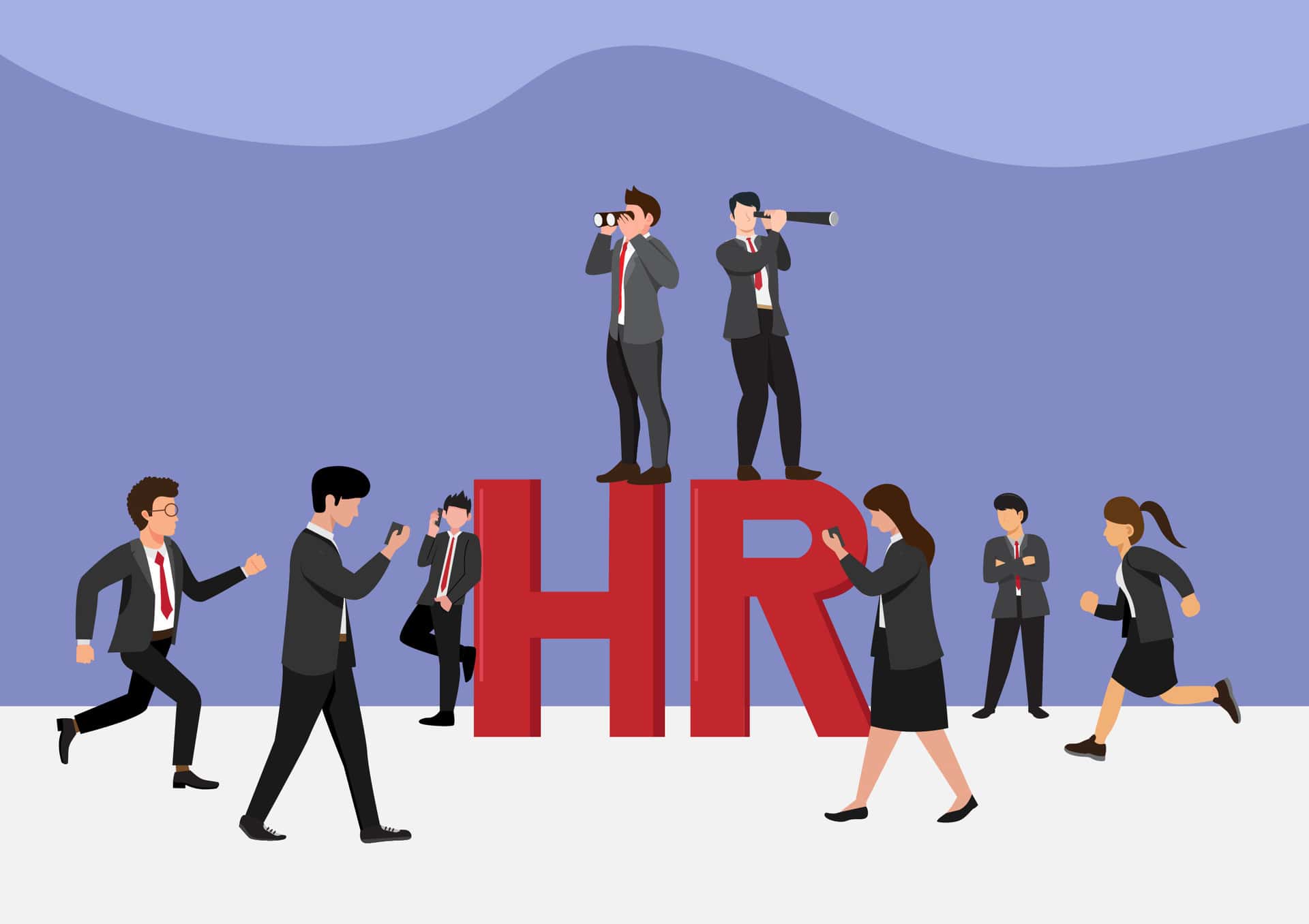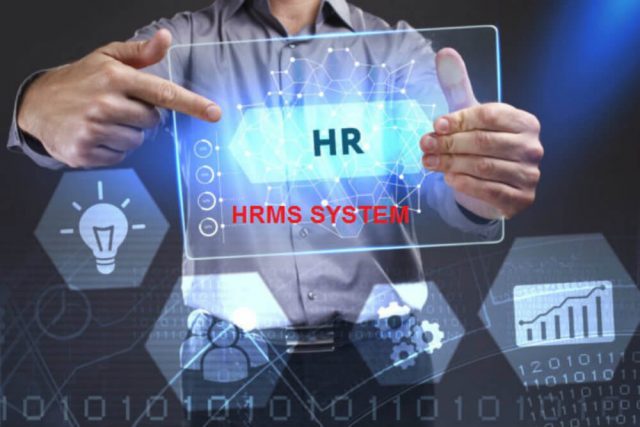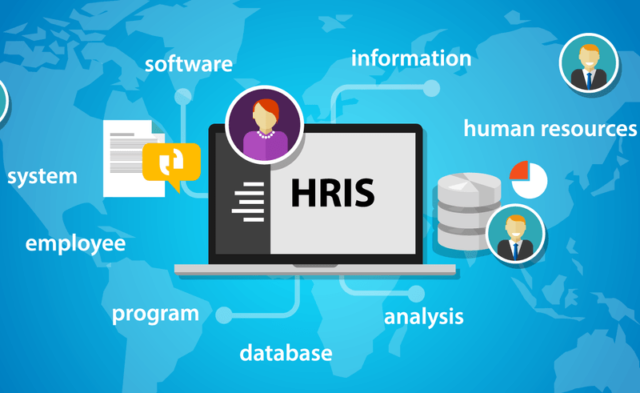Ready to explore HR policy in Bangladesh? In today’s fast-paced business world, effective HRM practices here are vital. It’s about managing and monitoring employees systematically, ensuring their well-being, and maximizing potential. The Human Resource in Bangladesh has transformed how companies handle HR challenges.
Several HRM practices are included in global Human Resource Management in Bangladesh.
- Recruitment Policy.
- Monitoring & data storage.
- Payrolls.
- Administration and attendance data processing
- And many more.
We have seen an upward and positive trend in human resource in Bangladesh in recent years. The grounds for this are the improving economy and higher education. HR management has been established as a separate department in the majority of the firm. Marking a significant shift in organizational dynamics.
Let’s start with some highlights from an article on current management practices in Bangladesh. Brace yourself for these mind-blowing stats from the Daily Star:
- Every year, two-thirds of organizations provide in-house and external training for their personnel. It’s a surefire way to empower and uplift their workforce to new heights.
- A whopping 75% of companies have unlocked the secret of employee emotion management. They know that a happy workforce is a productive workforce.
- But here comes the plot twist. A staggering 95% of businesses in Bangladesh have yet to offer long-term incentives to their staff.
- On the bright side, 45% of the organization preserves performance rewards for the best employees.
- To avoid unequal working conditions, 30% of companies have some sort of dispute resolution process in place. It’s all about creating a harmonious work environment.
Now, let’s have a look at the current state of the HR Management System in Bangladesh. This refers to a wide range of human resource management activities in all sorts of businesses. We’ve included the most important ones here.
What is modern HR practice?
Modern HR practices prioritize the holistic well-being of employees. Align HR strategies with business goals. Leverage technology for efficiency and innovation. And foster a culture of continuous improvement and adaptability.
Some key elements of modern HRM practices include:
- Implementing programs and activities to enhance employee satisfaction.
- Embracing agile methodologies to respond quickly to changing business needs and market dynamics.
- Utilizing HR analytics and data-driven insights to inform strategic HR initiatives.
- Investing in leadership development initiatives to cultivate and empower future leaders.
- Establishing clear policies and guidelines to support remote work arrangements.
- Building and promoting a positive employer brand to attract top talent.
- Encouraging a culture of continuous learning and skill development.
- Facilitating internal mobility and career development opportunities for employees.
Legal and Regulatory Framework for HRM Practices in Bangladesh
The practice of Human Resource Management in Bangladesh is governed by a specific legal and regulatory framework. Aims to protect the rights of employees and ensure fair and equitable treatment. This article provides an overview of the legal and regulatory framework for human resource management practices. Focusing on key aspects such as employment laws, labor regulations, HR policies, and management practices.
1. Employment Laws:
Bangladesh has several key employment laws that govern various aspects of HRM. The main legislation includes:
The Bangladesh Labor Act, 2006:
This act provides a comprehensive framework for employment relationships. Covering issues such as recruitment, terms and conditions of employment, working hours, leave, wages, termination, and dispute resolution.
The Bangladesh Labor Rules, 2015:
These rules provide detailed guidelines and procedures for implementing the provisions of the Labor Act, 2006. They cover areas such as health and safety, welfare facilities, disciplinary actions, and employment termination.
The Bangladesh Employment of Labour (Standing Orders) Act, 1965:
This act mandates employers to establish and maintain standing orders that outline various employment-related matters. Including job duties, disciplinary procedures, working hours, and grievance handling.
2. Labor Regulations:
The Department of Labor, under the Ministry of Labor and Employment, is responsible for implementing and enforcing labor regulations in Bangladesh. Key labor regulations include:
Labor Registration and Welfare Act, 2015:
This act mandates employers to register their establishments with the Department of Labor. Ensure compliance with various labor welfare measures such as health and safety provisions, insurance coverage, and social security benefits.
Minimum Wage Regulations:
The government periodically sets minimum wage rates for different industries and sectors. It ensures fair remuneration for workers. Employers are required to comply with these regulations. And provide employees with a minimum wage or higher.
Health and Safety Regulations:
Employers are obligated to provide a safe and healthy work environment for their employees. The Factories Act, 1965, and other relevant regulations outline specific requirements for workplace safety, fire prevention, and occupational health.
3. HR Policy in Bangladesh:
Organizations in Bangladesh develop and implement HR policies to govern various aspects of employee management. These policies cover areas such as recruitment and selection, performance management, training and development, compensation and benefits, employee relations, and grievance handling.
HR policies should align with applicable labor laws and regulations to ensure compliance and fair treatment of employees.
Now let’s know the importance and practices of the HR Management System in Bangladesh.
Why HRM practice in Bangladesh is important in 21st century organizations?
The importance of human resource management (HRM) cannot be overstated in contemporary organizations. HR practices in Bangladesh are essential in 21st-century organizations to attract and retain talent. And overall well-being of the organization.
Here we are sharing a comprehensive overview of why is HRM important in Bangladesh.
Growing Importance:
HR practices are gaining recognition as crucial components of organizational success. With businesses increasingly acknowledging the strategic role of HRM practices in Bangladesh assignment. It works as an HR in driving performance and fostering a positive work culture.
Recruitment and Selection:
The HR management system in Bangladesh emphasizes the importance of effective recruitment and selection processes. It ensures that organizations attract and select the most suitable candidates for vacant positions. By conducting thorough job analyses, strategic planning, and utilizing diverse recruitment channels. HRM helps build a talented workforce that aligns with the organization’s goals and culture.
Key practices in recruitment and selection include:
Job Analysis:
HR Management practice in Bangladesh conducts job analyses to identify the skills, qualifications, and experience required for a particular role.
Recruitment Planning:
HR professionals develop recruitment plans to ensure a systematic approach to hiring. Including defining job requirements, determining recruitment sources, and establishing a timeline.
Selection Methods:
Organizations utilize a combination of interviews, tests, and assessments. It helps to evaluate candidates’ competencies and suitability for the job.
Background Verification:
Background checks, including reference checks. Verification of educational qualifications is conducted to validate the information provided by candidates.
Emphasis on Talent Management:
There’s a heightened focus on talent acquisition, development, and retention. As organizations strive to attract skilled professionals. They want to build a capable workforce to remain competitive in the market. HRM helps organizations build a pipeline of skilled professionals who can drive innovation, productivity, and growth.
Technology Integration:
HR practices in Bangladesh are embracing technological advancements. With the adoption of HRIS (Human Resource Information Systems), recruitment software, and other digital tools to streamline processes, enhance efficiency, and improve decision-making.
Training and Development:
There’s a growing emphasis on employee training and development initiatives to enhance skills, boost productivity, and adapt to changing job requirements. Organizations are investing in learning programs, both internally and externally, to upskill their workforce. Key practices in training and development include:
Training Needs Assessment:
HR professionals identify skill gaps and training needs. Through employee performance evaluations, feedback, and competency assessments.
Training Delivery:
Organizations offer various training methods. Including classroom sessions, workshops, e-learning modules, and on-the-job training. All of these provide employees with the necessary knowledge and skills.
Leadership Development:
Special attention is given to developing leadership skills through targeted programs for managers and supervisors. To nurture future leaders within the organization.
Continuous Learning Culture:
HRM practices encourage a culture of continuous learning and knowledge sharing. Promoting employee engagement and professional growth.
Performance Management:
HRM establishes performance management systems to set clear goals, provide regular feedback, and evaluate employee performance objectively. This helps in aligning individual efforts with organizational objectives. And fostering a culture of accountability. Key practices in performance management include:
Goal Setting:
Organizations set clear and measurable performance goals that align with the overall objectives of the organization and individual job responsibilities.
Performance Appraisal:
Regular performance evaluations are conducted using a combination of self-assessment, manager evaluation, and feedback from peers and subordinates.
Feedback and Coaching:
Managers provide timely feedback to employees. Highlighting strengths and areas for improvement. And offer coaching and support to enhance performance.
Recognition and Rewards:
Organizations recognize and reward high performers through various programs. Such as performance-based incentives, bonuses, promotions, and other non-monetary rewards.
Compensation and Benefits:
The HR management system in Bangladesh designs and administers compensation and benefits packages. That must be competitive, fair, and aligned with organizational goals. By conducting salary benchmarking, structuring incentive schemes, and managing benefits programs, HRM motivates employees. Benefits packages are also there to attract and retain talented employees. Key practices in compensation and benefits include:
Salary Structure:
Organizations establish salary structures that are competitive, fair, and based on market benchmarks.
Benefits Packages:
Employees are provided with comprehensive benefits packages. Including health insurance, retirement plans, leave policies, and other perks.
Performance-Based Incentives:
Incentive schemes, such as bonuses and profit-sharing. All of these are designed to motivate employees and reward exceptional performance.
Employee Well-being:
Organizations focus on employee well-being by providing a conducive work environment, work-life balance initiatives, and employee assistance programs.
Employee Engagement:
Employee engagement is recognized as a key driver of organizational success. It is a critical aspect of Human Resource Management Bangladesh. It aims to foster a positive work environment and enhance employee satisfaction and commitment. It fosters a sense of belonging and loyalty among employees. Key practices in employee engagement include:
Communication and Feedback:
Organizations promote open and transparent communication channels to keep employees informed and seek their feedback.
What are the HRM Practices in Bangladesh Garments?
The garment industry plays a pivotal role in the economy of Bangladesh. Managing human resource systems in the garment sector of Bangladesh have a crucial impact on the industry’s overall performance and the well-being of workers. Some practices that mainly explored in the garment industry of Bangladesh are:
Ethical Recruitment:
To promote fair labor practices, organizations emphasize ethical recruitment by ensuring transparency. Employ equal employment opportunities. They discourage child labor or forced labor in the garments sector.
Technical Training:
Organizations provide technical training programs to enhance workers’ garment production skills. Such as sewing techniques, machine operation, quality control, and workplace safety practices.
Soft Skills Development:
HR departments also focus on improving workers’ soft skills. Including communication, teamwork, problem-solving, and time management. It helps to enhance overall productivity and collaboration.
Supervisor Training:
Supervisors receive specialized training to develop their leadership, managerial, and communication skills. Such Human Resource Development in Bangladesh effectively leads teams and ensures smooth operations.
Compliance Training:
Organizations conduct training sessions to educate workers on labor laws, workplace rights, and occupational safety. Implementing health regulations to promote a safe and compliant working environment.
Workplace Safety:
Ensuring workplace safety is of paramount importance in the garment industry. Human Resource Systems focus on creating a safe and healthy work environment. Organizations strictly adhere to safety regulations and guidelines. Such as fire safety, electrical safety, and building structure safety, as outlined by the government and international standards.
Workers receive comprehensive training on workplace safety measures. Including proper handling of machinery, emergency procedures, and the use of personal protective equipment (PPE).
Regular safety inspections and audits are conducted to identify potential hazards, assess risks, and implement corrective measures promptly.
Health and Hygiene Facilities:
Employers ensure access to clean drinking water, hygienic toilets, and proper sanitation facilities in the workplace.
Fair Wages and Benefits:
Organizations strive to provide fair wages and benefits packages to workers. This HRM course in Bangladesh complies with minimum wage regulations and industry standards.
Employee Assistance Programs:
HR departments may establish programs to support workers’ well-being. Such as counseling services, healthcare facilities, and recreational activities.
Health and Hygiene Facilities:
Employers ensure access to clean drinking water, hygienic toilets, and proper sanitation facilities in the workplace.
Grievance Redressal Mechanisms:
Organizations maintain effective grievance redressal mechanisms to address employee complaints, concerns, or disputes fairly and on time.
What are the challenges of HRM in Bangladesh?
Human Resource in Bangladesh faces several challenges due to many reasons. Some are the country’s unique socioeconomic context, rapid industrialization, and evolving labor market dynamics. Understanding and addressing these problems of HRM in Bangladesh is crucial. As it helps organizations to effectively manage their human capital.
Workforce Diversity and Cultural Dynamics:
Bangladesh has a diverse workforce in terms of language, religion, ethnicity, and cultural practices.
HRM in Bangladesh faces challenges in managing and leveraging this diversity. In order to create an inclusive and harmonious work environment.
Understanding and respecting different cultural norms, values, and practices is essential to avoid conflicts and promote collaboration among employees.
Talent Acquisition and Retention:
The demand for skilled talent often exceeds the available supply in Bangladesh.
HRM faces challenges in attracting, recruiting, and retaining qualified professionals. Particularly in industries such as IT, engineering, and specialized manufacturing.
Competing with multinational companies. Offering attractive compensation packages. Providing career growth opportunities is a key strategy for addressing this challenge.
Limited HRM Skills and Competencies:
The HRM profession in Bangladesh is relatively new and evolving.
HR professionals may face challenges related to limited skills, knowledge gaps, and a lack of specialized training in HR practices in Bangladesh.
It’s important to develop the capabilities of HR practitioners. Through training, certification programs, and continuous professional development.
Unionization and Collective Bargaining:
Bangladesh has a strong labor union presence, particularly in the garment industry.
HRM faces challenges related to unionization, collective bargaining, and managing employee relations effectively.
Organizations need to establish proactive communication channels. Engage in constructive dialogue with unions. Must address employee grievances promptly to maintain a harmonious work environment.
Technological Advancements and Automation:
Rapid technological advancements and automation pose challenges for HRM. In terms of workforce planning, skills development, and job redesign.
HR professionals need to stay updated with emerging technologies. Identify skill gaps. Facilitate reskilling and upskilling initiatives to ensure employees remain relevant and productive in an automated environment.
Limited HR Metrics and Analytics:
HRM in Bangladesh faces challenges in effectively measuring and analyzing HR-related data and metrics.
Limited access to HR analytics tools. Lack of data-driven decision-making. A focus on traditional HR practices hinders the optimization of HRM strategies.
Adopting HR analytics and leveraging data-driven insights can help organizations make informed decisions. Enhance HR practices in Bangladesh. And align HR strategies with business objectives.
What is the present state of HR practice in Bangladesh?
In recent years, Bangladesh has made significant strides in human resource development. Efforts have been made by the government, educational institutions, and private organizations. HR software solutions have become an integral part of HRD initiatives in Bangladesh. It enables organizations to streamline HR processes, enhance efficiency, and improve decision-making. Here’s the status of Human Resource Development in Bangladesh with the alignment of HR Software.
To hire the Best Employees
HR software’s key role is to locate the best personnel to help your company stay afloat. Whether you handle the hiring yourself or use an executive staffing business, it’s the most time-consuming task to do. But HR software in Bangladesh greatly helps in this sector. This software has modules for job boards and recruitment which are used for,
- Keeping track of applicants.
- Count the number of candidates who have been interviewed.
- Keep a record of those candidates who passed.
- Lastly, help is doing background checks and screening criteria.
HR software greatly helps in recruiting and hiring systems.
Human Resource Management Practice in Bangladesh in Banks
The recruitment and selection procedure differs depending on the organization’s category. Except for banking and financial institutions, this approach is a little more casual in a private organization.
These industries are not obligated to follow any legislative recruitment requirements. They only concentrate on credentials or relationships and referrals. As a result, Personal intervention hampers the activities most of the time.
In such cases, management takes the benefits of the HR policy in Bangladesh. They can greatly use those tools to identify their hiring needs, create job descriptions as well as manage those. As a result, there will be no chance of unwanted activity. Private Banks and Financial Organizations will find the right talent for the business.
Human Resource Management in Bangladesh Public Service
The public service sector in Bangladesh follows a rigorous recruitment and selection process to ensure merit-based appointments. The Bangladesh Public Service Commission (BPSC) conducts examinations and interviews. They select eligible candidates for various government positions. The process emphasizes transparency, fairness, and equal opportunities to attract the best talent and maintain public trust.
HR Bangladesh in the public service sector focuses on continuous training and development. The Bangladesh Public Administration Training Centre (BPATC) and other specialized training institutions offer training programs. Such initiatives contribute to the professional growth and effectiveness of public servants.
Efforts are made to engage and motivate employees in the public service sector. Employee participation in decision-making, communication channels, and employee welfare programs. A conducive work environment is an important factor in enhancing employee motivation and satisfaction.
The practice of Human Resource Management in the public service sector faces several challenges. These include political interference, bureaucratic red tape, and insufficient financial resources. Utilizing HR software can greatly help in addressing these challenges. It helped to reform promoting professionalism and meritocracy.
Professional Development and Learning
The importance of training and learning in keeping your personnel up to date cannot be overstated.
One of the important factors of HR Policy in Bangladesh is the training process. In recent years, some private firms have established a budget and allowance for investing in employee training. Moreover, ignorance of the training needs puts obstacles in the training programs.
But time has changed. Bangladeshi companies can adopt HRM in Bangladesh to provide educational content to employees. HR software integrated with the learning management system (LMS). It shares:
- Professional certificate management solution.
- Test & Training.
- Performance Management.
Such solutions greatly minimize the staffing and planning issues of the company.
Managing Payroll in Bangladesh
Except for some, there is not any specifically structured pay scale in private organizations. Management fixes the salary to a different level of positions. Sometimes fixation may differ within the same levels in terms of qualification and experience in an arbitrary way.
In the case of the Public sector, there are some regulation alterations to the advancement of employees of all grades too. Collective bargaining is not allowed in the public sector.
HR management software automates pay schedules and stores time and attendance data for your employees. This technology allows employees to enter their leave information, which is then authorized by a supervisor. It frees up your time to focus on other aspects of your organization. So we believe it’s an intelligent approach if you consider HR & Payroll Software in Bangladesh for managing the organization’s payroll system.
Performance Management and Appraisals
Performance evaluation is an important aspect of evaluating an employee’s performance. It performs about employee accomplished target level. An accurate appraisal helps in performance management depending on the appraisal. It is rigorously managed by the management in private commercial banks and other financial organizations. And there is a consequence of few corruptions because of negative or unsupportive behavior or relation.
Furthermore, management constructively conducts the appraisal. Other private companies have an appraisal system. However, it does not function in the same way that financial institutions do.
So it’s high time Bangladesh Companies must adopt HR management software for performance appraisal. If you want to improve your company’s performance appraisal process. If you want to implement hassle-free performance reviews, choose HR software in Bangladesh.
It’s built with a specialized Performance Appraisal module to streamline employee performance reviews. From recording one-on-one discussions to simply enabling relevant info – this software fits every specific need.
More so, this software allows good performance management and ensures each employee’s performance review is meaningful.
Employee Benefits
In 2015, there was a push to introduce pension programs for the private sector. Employees in private enterprises opt to receive a pension after retirement. However, this has not yet been exercised fully. Financial institutions and private companies allow these benefits arbitrarily. Finally, there is now a new law governing the private sector pension program.
The core HR software module directly connects with benefits management. It has a built-in module to administer employee benefits efficiently. It allows employees to update and view their benefits section at any time. It establishes rule-based eligibility which opens up crucial documentation. Only those who are eligible for the benefit can see that.
Benefits management is a tough job. And the public and private sectors can adopt HR solutions to make it easier.
FAQs on HRM Practices in Bangladesh
Understanding HR Policy in Bangladesh is crucial for organizations seeking to effectively manage their human resources in Bangladesh. Here, we provide simple answers to frequently asked questions regarding HRM practices. Shedding more light on their significance and impact.
What is Human Resource Management in Bangladesh?
Ans: Human Resource Management in Bangladesh refers to the strategic approach taken by organizations in the country to effectively manage their human capital. It encompasses a wide range of practices, policies, and processes. All are aimed at attracting, developing, and retaining talented employees while aligning their efforts with organizational goals.
Human Resource Management practices in Bangladesh are diverse and dynamic. Reflecting the evolving needs of the country’s business landscape. Organizations in Bangladesh understand that their success hinges upon their ability to leverage human potential. As a result, they adopt various HRM practices to maximize employee performance. And create a positive work environment.
There are many HRM practices in Bangladesh assignment on the internet focused on the unique challenges and opportunities within the country’s context. There is a strong emphasis on employee welfare and job security. Organizations recognize that a motivated and satisfied workforce is vital for long-term success.
Furthermore, HRM in Bangladesh extends beyond individual HR practices. Encompasses broader management practices as well.
What is the Human Resource Management System in Bangladesh?
Ans: Human resources management system or HRMS is a collection of software programs used to manage human resources and related operations of the HR department. It allows a company to have a complete understanding of its workers while remaining compliant with changing tax and labor rules.
When properly managed, HR software adds value to your company. It forecasts more valuable ideas and ensures that employees are in an atmosphere where they can thrive.
What are HR practices or Practices?
Ans: HR practices, also known as human resource practices. They are refer to the strategies, policies, and procedures implemented by organizations to manage their workforce effectively. These practices encompass various aspects. Such as recruitment, training, performance management, compensation, and employee relations.
What is HRM practices?
Ans: HRM practices, or Human Resource Management practices, involve the systematic management of human capital within an organization. These practices focus on attracting, developing, motivating, and retaining employees to achieve organizational goals and objectives.
Why is HRM practices important in an organization?
Ans: HRM practices are essential in organizations as they help align human capital strategies with business objectives. Attract and retain talent. Enhance employee performance and satisfaction. And lastly, ensure compliance with legal and ethical standards and drive organizational success.
What is the importance of HRM policies and practices?
Ans: HRM policies and practices provide guidelines and frameworks for managing employees effectively. They ensure consistency, fairness, and transparency in HR processes. Promote employee engagement and well-being. Lastly, contribute to building a positive organizational culture.
What is the impact of HRM practices on organizational performance?
Ans: HRM practices have a significant impact on organizational performance by influencing employee productivity, motivation, and job satisfaction. Effective HRM practices contribute to higher employee engagement, lower turnover rates, and improved customer satisfaction. Ultimately, enhanced organizational success.
How do HRM practices influence organizational Behaviour?
Ans: HRM practices shape organizational behavior by influencing employees’ attitudes, perceptions, and behaviors. For example, supportive HRM practices such as training and development initiatives can foster a positive work environment and promote teamwork. Unfair or inconsistent practices may lead to dissatisfaction and disengagement.
What are the three most important roles of HRM within the organization?
Ans: The three most important roles of HRM within an organization are:
- Strategic Partner: Aligning HR strategies with organizational goals.
- Employee Champion: Advocating for employee needs and well-being.
- Change Agent: Facilitating organizational change and adaptation.
What will be the role of HR in 2025?
Ans: In 2025, the role of HR is expected to evolve further. With a focus on leveraging technology for HRM processes. Fostering diversity and inclusion. Addressing skills gaps through continuous learning initiatives. And promoting agility and innovation in response to changing business environments. Additionally, HR Bangladesh will continue to play a strategic role in shaping organizational culture and driving employee engagement and performance.
In the End
Human Resource Management in Bangladesh is evolving in a new way. But there is still a long way to go. Minor communities continue to be underserved in terms of employment opportunities. In addition, there are certain undesirable HRM practices in Bangladesh, red tape, corruption, and a lack of diversity management skills. Government norms and laws are also important factors in establishing an efficient HR Policy in Bangladesh.
With various technologies, digital technology greatly assists in the management of labor surplus. Now businesses should adopt HR & Payroll software in Bangladesh to successfully develop benefit plans for both employees and companies.
If you are an HR manager, it will be of great help if you use the digital HR Management System in Bangladesh.
Every year HR sets its challenges. However, we hope that HR management provides organizational strength to overcome those challenges. None of them, thankfully, are overpowering anymore.






